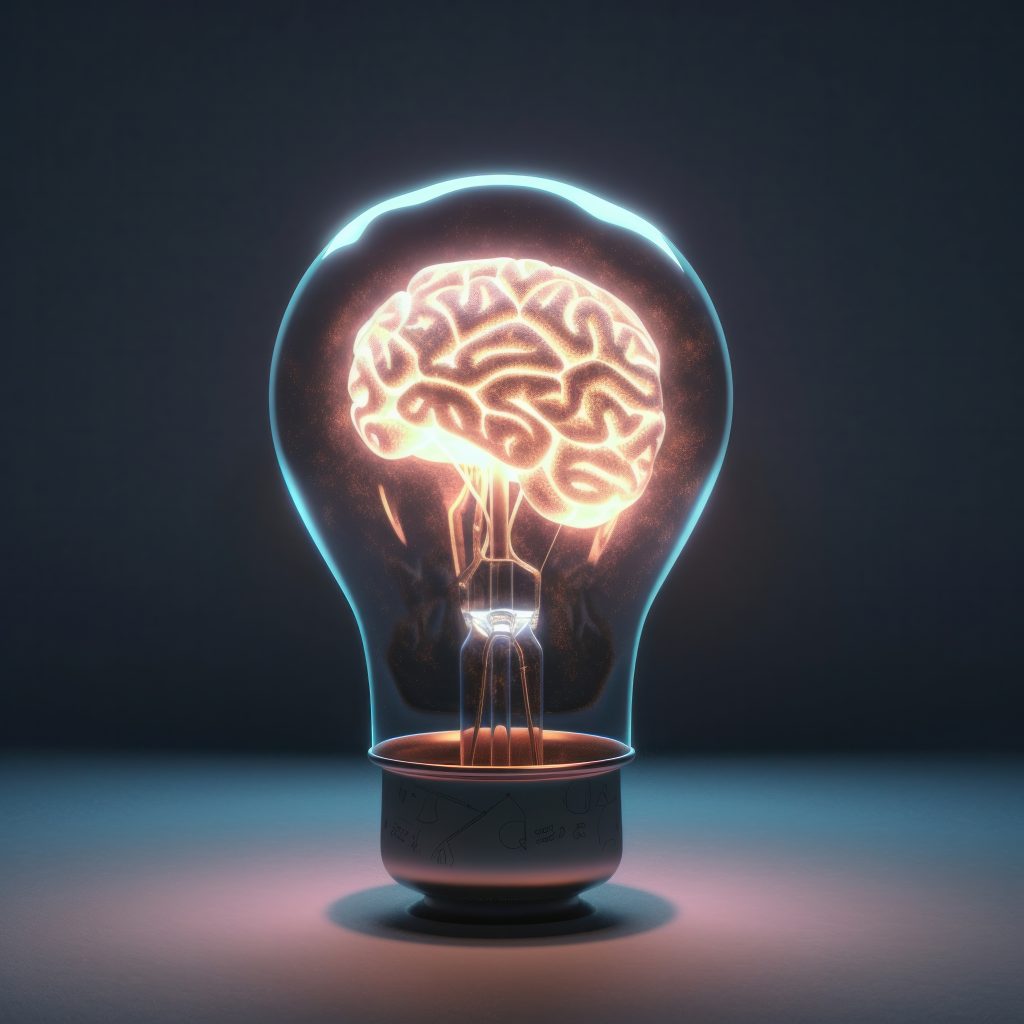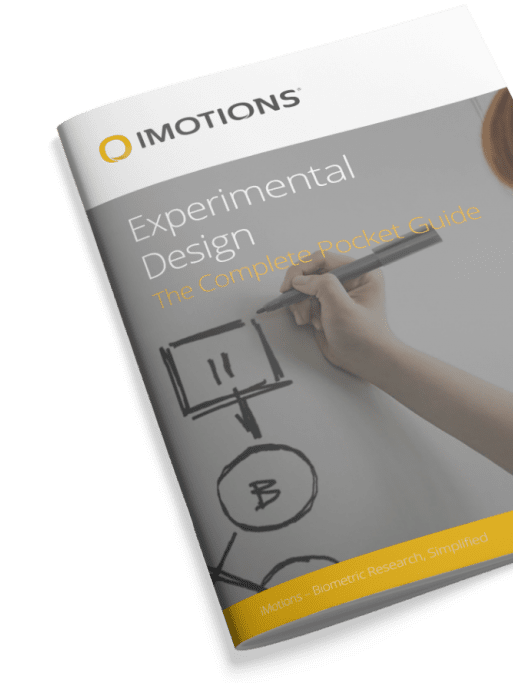As a relatively new discipline, neuroscience has been studying the biological processes behind our behaviors for a few decades now. The years of research and theory have shown how certain emotions, thoughts, and behaviors look in certain brain areas. Thankfully, all research insights and tools from neuroscience can now be also used to understand the motivation and thought process behind customer decision-making.
This article will present some information on how neuroscience can empower human behavior research and the tools available to do that.
Types of Neuroscience Software and their Integration with Eye Tracking
- Neuroscience Software:
- Definition: These are software tools designed specifically for recording, analyzing, and interpreting neural data. These tools are essential for neuroscientists who aim to understand the complex dynamics of the brain and its behavior.
- Eye Tracking with iMotions: iMotions is a platform that integrates a variety of sensor technologies, including eye tracking. By incorporating eye tracking into neuroscience studies, researchers can gain insights into where a participant is looking, for how long, and what captures their attention. This can provide a direct link between visual stimuli and neural responses.
- Data Analysis Software:
- Definition: Data analysis software refers to tools that enable the collection, analysis, and interpretation of experimental data. They often include statistical tools and algorithms to parse large datasets.
- Integration with Eye Tracking: Data from eye-tracking experiments can produce a significant volume of raw data points. Using data analysis software, these can be transformed into meaningful patterns, heatmaps, and sequences. iMotions, for example, offers streamlined data analysis for eye-tracking data, making it easier for researchers to understand visual attention and correlate it with other physiological data.
- Simulation and Modeling Software:
- Definition: These software tools are used to create models of neural systems, allowing for the simulation of brain processes or neural networks. They can help predict how real neural systems might behave under different conditions.
- Eye Tracking as a Parameter: When creating simulations or models that relate to visual processing or attention, eye tracking data can be invaluable. By inputting real-world eye-tracking data into these models, researchers can improve the accuracy and realism of their simulations. iMotions could potentially provide a seamless integration where the data obtained from eye-tracking studies can be fed into simulation models.
- Brain Imaging and Visualization Tools:
- Definition: These are tools that facilitate the visualization of brain structures and activities. Common examples include MRI, fMRI, and PET scans.
- Eye Tracking in Imaging Studies: Eye tracking can be combined with brain imaging to offer a comprehensive view of brain activity in relation to visual stimuli. For instance, by syncing eye tracking with fMRI, researchers can correlate specific visual events (like seeing a particular image) with brain activations. Platforms like iMotions can make the synchronization of these data streams more manageable, providing a holistic understanding of the brain’s visual processing mechanisms.
iMotions: Best Neuroscience Research Software
iMotions is the world’s leading provider of multimodal neuroscience software solutions. It integrates an ecosystem of biosensor technology and data analysis solutions to provide actionable data and help researchers and marketers advance their understanding of human behavior.

Here are some ways in which the iMotions neuroscience software supports behavioral research.
Let’s talk!
Schedule a free demo or get a quote to discover how our software and hardware solutions can support your research.
Multi-modal data integration
An important aspect of the iMotions neuroscience software is its multi-modal capability. This means that the software enables the collection and analysis of human behavioral data through various neuroimaging tools, including eye tracking, galvanic skin response, facial expression analysis, EEG, EMG, ECG, and voice analysis. They also simplify the process of consolidating data from these tools onto a unified platform.
Using biosensor data from multiple sources, such as the ones mentioned above, ensures a layered and nuanced understanding of someone’s inner world and emotional experience.
Eye tracking analysis
It has always been said that the eyes are a window to the soul – and perhaps there is a grain of truth in that saying. Our eyes provide a lot of information about the things that light up us or spark our interest. In behavioral science, a prolonged gaze or intense eye movement activity to a stimulus reveals interest and emotional arousal.
Thankfully, eye-tracking technology is dedicated to studying these aspects by gathering data on eye movements and converting them into actionable behavioral insights. It plays a crucial role in neuroscience and neuromarketing software and delivers key analytics regarding the amount of time individuals spend looking at certain aspects of a product, avoiding specific stimuli, or expressing heightened interest in particular scenarios.
Eye Tracking Screen Based
Measure visual attention on monitors and mobile devices with the screen-based eye tracking module.
See Features NowWant to learn all about eye tracking and its different applications? Then download our complete pocket guide to eye tracking.
Facial expression analysis
Facial Expression Analysis (FEA) does exactly what its name suggests: it analyses facial expressions that convey the emotions of a person. It achieves this by using fully automated computer algorithms that detect and assess subtle and major movements on the face. FEA captures emotions in real time, as they happen while someone reacts to a stimulus or interaction.
Since facial expressions are paramount in understanding customer behavior, neuroscience software solutions should include this type of data. Recognizing facial expressions, when applied in appropriate contexts, can serve as one of the strongest cues to someone’s motivation, decision-making process, and emotional experience of any given scenario or stimuli.
For even greater detail and more targeted facial expression research fEMG is used, as this gives insights into micro-expressions which occur so fast that a standard camera won’t be able to register them. These expressions of emotions are important for how we subconsciously read other peoples emotions, and they can be studied using the same techniques and analyses as for EMG.
If you are interested in deep-diving into what can be learned from facial expressions, both macro- and micro-expressions, then download our free pocket guide about facial expression analysis.
Physiological measurements
Most research on emotions would be incomplete without measuring physiological reactions. As you probably know, emotions have a strong physiological component, too. Some examples of physiological reactions to emotions include sweating, racing heart, and trembling.
When trying to form a picture of how an image or video impacts a customer or respondents, researchers should also look at how that person responds on a physiological level. Some tools that are used in this scope are electrodermal activity (EDA/GSR), ECG, or Respiration. A neuroscience research software should allow the integration of such measurements for a comprehensive overview of someone’s mental and emotional processes.
How iMotions Empowers Neuroscience Research
The iMotions neuroscience software solutions help you access the brain activity occurring in your customer’s brain, so you can better predict how to respond to their individual needs, preferences, and specific interests. Integrating multiple biosensor technologies will provide a complete picture of your client’s inner world.
But there are also some benefits that the iMotions neuroscience software offers, such as:
Enhancing data collection
Depending on your research goals, you might need to collect data from multiple sources, such as brain activity with EEG, eye movements with eye tracking, and stress levels with galvanic skin response. With iMotions, you can collect data through multiple biosensors and analyze it within the same software. One of the strengths of iMotions is its ability to integrate multiple sources of data, allowing researchers to enhance their data collection stage.
Uncovering deeper insights into human behavior and cognition
Human cognition and behavior are highly complex – perhaps even some of the most complex things that exist. Knowing this, it would be unrealistic to understand an individual just by looking at them or asking them general and superficial questions.
The biometric technologies integrated with iMotions’s neuroscience software enable researchers to uncover the hidden factors that lie behind human behavior. When you combine measures of someone’s eye movements, facial expressions, muscle responses, and stress levels, you almost get a glimpse into what they are thinking and how they are feeling. In certain contexts, this information is paramount.
Enabling cross-disciplinary collaboration
The iMotions neuroscience software is designed to facilitate seamless collaboration across diverse fields. With its intuitive interface and powerful analytical tools, researchers, psychologists, marketers, and neuroscientists can converge their expertise to gain a deeper understanding of human behavior.
Getting Started with iMotions Neuroscience Lab Software
At iMotions, we share a passion for uncovering human behaviors and perceptions. We use advanced technologies that analyze the feelings and emotions that lead people to make decisions and choices in personal or commercial settings. However, we are aware that working with perceptions, emotions, and behaviors is no easy task – so we try to simplify the process.
Given the complexity of behavioral research, we try to make the interaction with our neuroscience software as simple and intuitive as possible. This is the reason iMotion prioritizes user-friendly software installation and setup. Providing step-by-step guidance and intuitive interfaces, the iMotions installation process will feel straightforward, regardless if you’re a seasoned researcher or new to the platform. The seamless installation and setup process lets you focus on what matters the most: your research. If you are new to iMotions or are curious to find out more information about our tools, do get in touch with us.
FAQ about Neuroscience Software
Q: What software do neuroscientists use?
A: Neuroscientists use a range of software tools tailored to their specific research needs. Some popular ones include:
Brain Imaging Software: Tools like FSL, SPM, and AFNI are used for analyzing brain imaging data from fMRI, MRI, and PET scans.
Neural Simulation Software: Programs like NEURON and Brian are employed to simulate the activity of neurons and neural networks.
Data Analysis Software: Tools like MATLAB, Python (with libraries like MNE or Nipy), and R provide platforms to analyze neural data, extract patterns, and conduct statistical tests.
Eye Tracking Software: Platforms like iMotions are prominent tools that offer integrated solutions for tracking eye movements, providing insights into visual attention and cognitive processes.
Q: How do neuroscientists study the brain?
A: Neuroscientists employ a multifaceted approach to studying the brain:
Brain Imaging: Techniques like MRI, fMRI, PET, and DTI are used to visualize brain structures and activity.
Electrophysiology: This method records electrical activity from neurons using techniques like EEG, MEG, or single-cell recordings.
Behavioral Experiments: Observing and analyzing behavior, often while simultaneously recording neural activity, can provide insights into brain function. For example, eye tracking is used to understand visual processing and attention by monitoring a person’s gaze, pupil dilation, and blink rate.
Molecular and Genetic Methods: These involve studying the genetic and molecular basis of neural function and include techniques like optogenetics.
Computational Modeling: Using software tools, neuroscientists stimulate brain activity, neural circuits, or entire neural systems to predict and understand their behaviors.
Q: What is the new technology for neuroscience?
A: Neuroscience continuously evolves with the introduction of novel technologies. Some of the emerging technologies include:
- Optogenetics: This technique uses light to control the activity of neurons genetically engineered to be light-sensitive. It allows for precise activation or inhibition of specific neuronal populations.
- CRISPR/Cas9: This gene-editing technology can be used to investigate the genetic basis of neural function and dysfunction.
- Neural Dust: Tiny, wireless sensors that can be implanted into the brain to monitor neural activity in real-time.
- Integrated Platforms: Tools like iMotions are revolutionizing neuroscience research by offering an integrated platform that can combine data from various sources, such as EEG, GSR, and eye tracking. This holistic approach allows for a more comprehensive understanding of brain-behavior relationships.
- Advanced Eye Tracking: Modern eye-tracking technology not only monitors gaze direction but also provides insights into cognitive load, emotional states, and even potential neurological disorders.
- Neuroscience is a rapidly evolving field, and as technologies continue to advance, our understanding of the brain will grow, with tools like eye tracking playing a crucial role in these discoveries.
Free 44-page Experimental Design Guide
For Beginners and Intermediates
- Introduction to experimental methods
- Respondent management with groups and populations
- How to set up stimulus selection and arrangement

Conclusion
As we discussed at the beginning of this article, all our choices, actions, and emotions have a biological correlation in our brains. If we study these brain processes and better understand the physiological reactions associated with them, we can also understand people a lot better. Luckily, this is what neuroscience software solutions like the ones provided by iMotions are trying to achieve: they uncover what happens in people’s unconscious minds when interacting with a product or another person. Given all the benefits of the iMotion software highlighted in this article, you can see how you can enhance your research using our tools.
Let’s talk!
Schedule a free demo or get a quote to discover how our software and hardware solutions can support your research.











